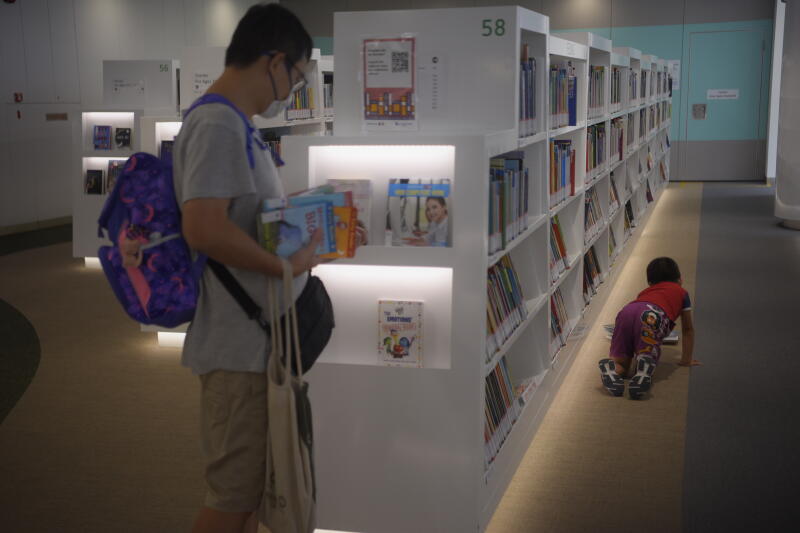English most spoken at home for nearly half of S'pore residents: Population census
Sign up now: Get ST's newsletters delivered to your inbox

The proportion of residents aged 15 and above who can read and write remained high at 97.1 per cent in 2020.
ST PHOTO: MARK CHEONG
Justin Ong
Follow topic:
SINGAPORE - Citizens and permanent residents across age and ethnic groups in Singapore are now more literate in two or more languages than they were in 2010.
Most of them also speak more than one language at home - with the choice most frequently English.
These were the findings of a decennial population census released by the Department of Statistics on Wednesday (June 16).
Overall, the proportion of residents aged 15 and above who can read and write remained high, at 97.1 per cent in 2020 versus 95.9 per cent in 2010.
The proportion of multi-language literates rose from 70.5 per cent a decade ago to 74.3 per cent today.
Nine out of 10 in the younger cohort of 15- to 24-year-olds are literate in two or more languages - a share that has stayed constant from 2010.
Those aged 45 to 54 clocked the biggest rise in multi-language literacy, from 63.6 per cent in 2010 to 80 per cent in 2020.
Across the three major ethnic groups, an overall increase in English literacy corresponded with a decrease in literacy in only mother tongue languages.
In 2020, more than six in 10 Chinese could read and write in English and Chinese.
The proportions were more than eight in 10 for the Malays literate in English and Malay and around four in 10 for Indians with English and Tamil.
Some 17 per cent of Chinese continued to be literate in Chinese only, compared with 9 per cent for Malays and 3.2 per cent for Tamils in their respective mother tongues.
When it came to communication at home, 48.3 per cent of residents surveyed spoke English most frequently, up from 32.3 per cent a decade ago.
Compared with other languages, Mandarin and Chinese dialects saw the largest percentage point fall (5.7 and 5.6) in share of residents who used them most commonly at home.
Among those who spoke English most at home, more than four in five also spoke a vernacular language.
For a greater proportion of ethnic Chinese residents, English has taken over as the language most frequently spoken at home (47.6 per cent). In 2010, Mandarin was the first choice for 47.7 per cent of them.
Malays continued to favour using Malay at home, although the share of those doing so dropped from 82.7 per cent in 2010 to 60.7 per cent in 2020. In this time period, those turning to English more than doubled in percentage points, from 17 per cent to 39 per cent.
For Indians, a larger proportion continued to speak English most commonly at home, going up from 41.6 per cent in 2010 to a majority 59.2 per cent in 2020.
The census found that across ethnic groups, frequent English use at home rose for all ages and education profiles, but it was generally more prevalent among younger cohorts and those with higher academic qualifications.
For example, the age groups that saw the largest jumps in proportion were the 15- to 24-year-old Chinese (28.5 percentage points), five- to 14-year-old Malays (37.2) and 25- to 34-year-old Indians (33.8).
Among residents with university degrees, English was the preferred medium at home for around six out of 10 of Chinese, Malays and Indians each.
For those with below-secondary qualifications, the equivalent figures were 9.6 per cent of Chinese, 13.5 per cent of Malays and 34 per cent of Indians.
The census surveyed 150,000 households in 2020 for its latest iteration. It focuses mainly on the resident population, which comprises citizens and permanent residents. Singapore's total population rose from 5.077 million in 2010 to 5.686 million in 2020.

